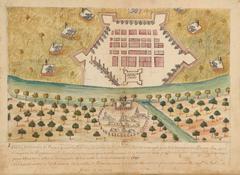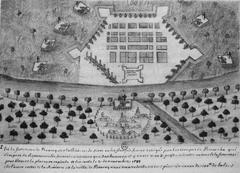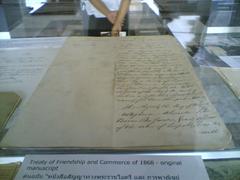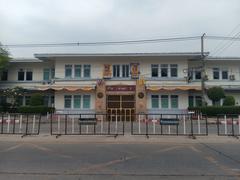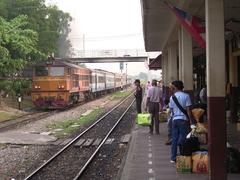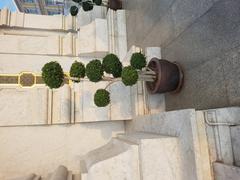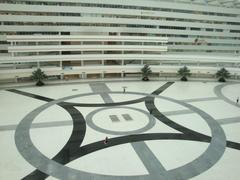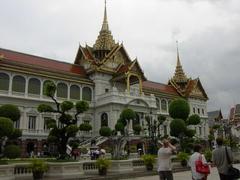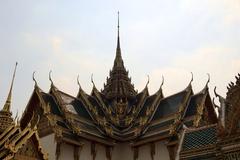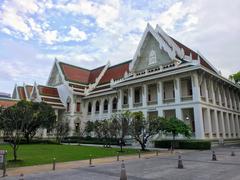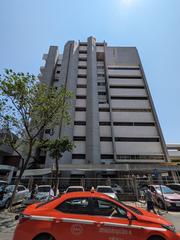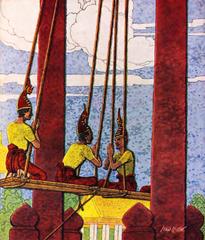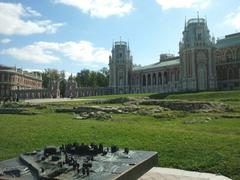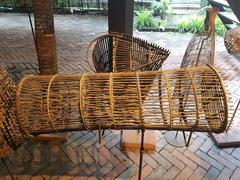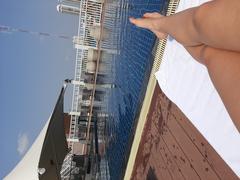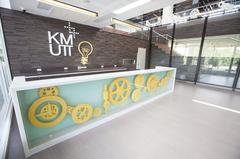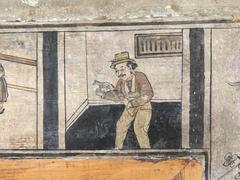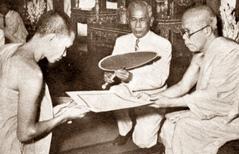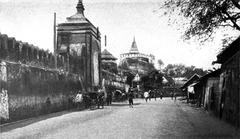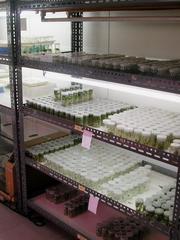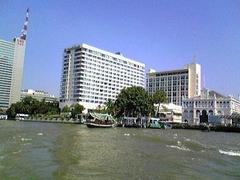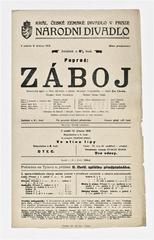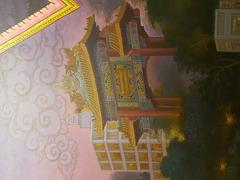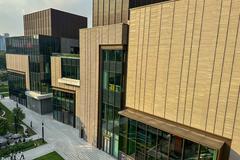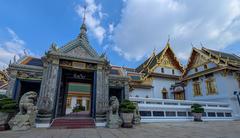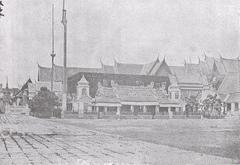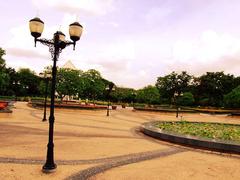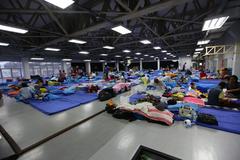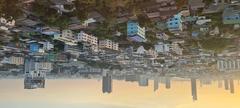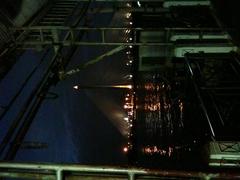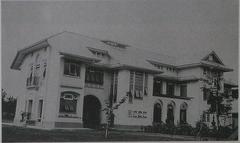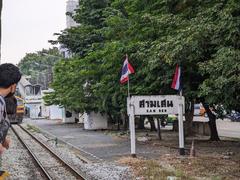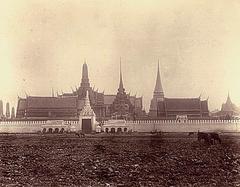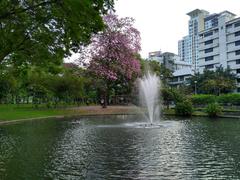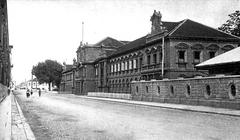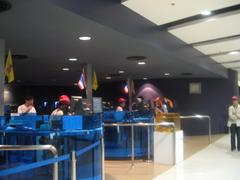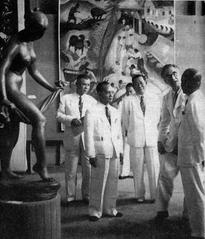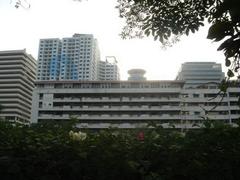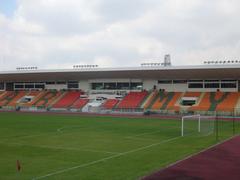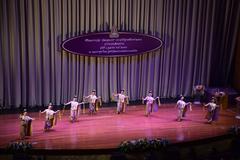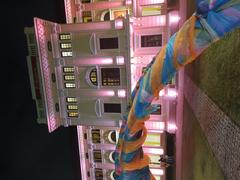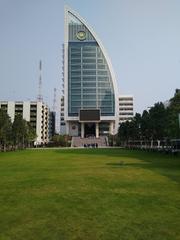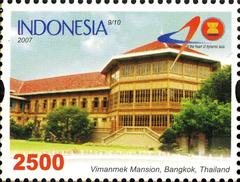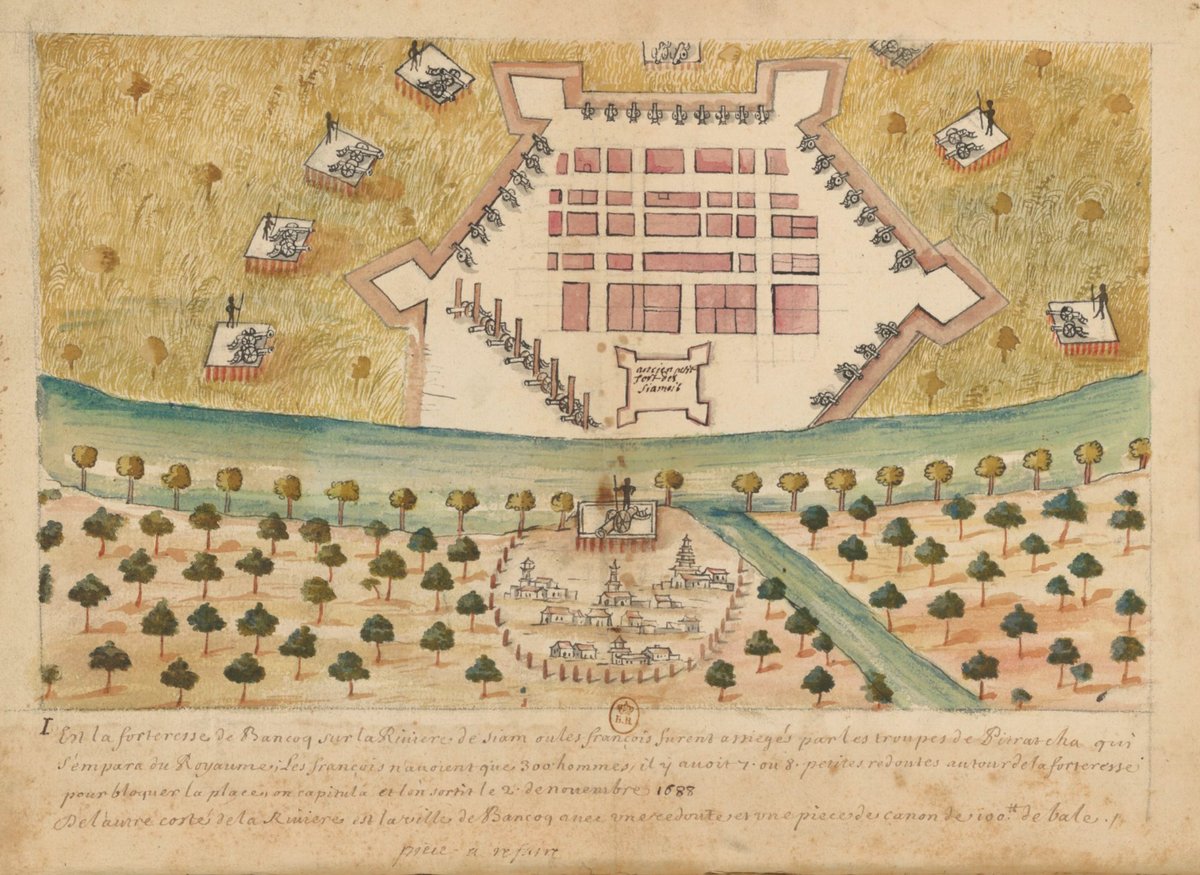
Comprehensive Guide to Visiting Pom Wichai Prasit in Bangkok, Thailand
Date: 01/08/2024
Introduction
Pom Wichai Prasit, commonly referred to as Wichaiprasit Fort, is a significant historical landmark located in Bangkok, Thailand. Constructed during the Ayutthaya period, this fort was strategically built along the Chao Phraya River to protect the city from potential invasions. Today, it stands as a testament to Bangkok’s rich cultural heritage and military history. This comprehensive guide aims to provide you with all the essential information for visiting Pom Wichai Prasit, including its history, visiting hours, ticket details, and nearby attractions. Whether you are a history enthusiast or a casual traveler, this guide will help you make the most of your visit to this iconic site (Wikipedia).
Table of Contents
- Introduction
- History of Pom Wichai Prasit
- Visitor Information: Tickets, Visiting Hours, and Accessibility
- Architectural Features
- Cultural and Historical Significance
- Nearby Attractions
- FAQs
- Conclusion
History of Pom Wichai Prasit
Origins and Early History
Pom Wichai Prasit dates back to the Ayutthaya period. The fortifications of Bangkok, including Pom Wichai Prasit, were initially constructed to protect the city, then an outpost of Ayutthaya, from potential invasions via the Chao Phraya River. The strategic location of Bangkok on the west bank of the river made it a critical point for defense (Wikipedia).
Thonburi Kingdom
Following the fall of Ayutthaya in 1767, King Taksin established his capital at the site of Bangkok, which became known as the Thonburi Kingdom. During this period, the city was expanded, and new defensive structures were built, including the renaming and reinforcement of the old fort on the western bank of the river to Pom Wichai Prasit. This fort became an integral part of the Thonburi royal palace (Wikipedia).
Early Rattanakosin Period
In 1782, when the city of Rattanakosin replaced Thonburi as the capital, new walls and forts were constructed to further fortify the city. However, many of these structures were removed or replaced in the latter half of the 19th century to accommodate the expanding city. Despite these changes, Pom Wichai Prasit remained a significant military installation (Wikipedia).
20th Century Developments
In the early 20th century, Pom Wichai Prasit underwent significant changes. In 1903, the fort, along with the royal palace of Thonburi, was allocated for the establishment of the Royal Thai Naval Academy. This marked a new chapter in the fort’s history, as it transitioned from a defensive structure to an educational institution. The academy remained at the site until 1946, after which the fort became the headquarters of the Royal Thai Navy (Wikipedia).
Modern Era and Current Use
Today, Pom Wichai Prasit is the oldest remaining fort in Bangkok and is still in military use. It is now part of the Royal Thai Navy Headquarters. In 1971, a gaff-rigged flagpole was erected at the fort, which has since been used to fly the Naval Ensign. The fort also plays a ceremonial role, particularly in the firing of gun salutes. This tradition began in 1979 when the Memorial Bridge was permanently lowered, preventing warships from sailing upriver to perform the task (Wikipedia).
Visitor Information: Tickets, Visiting Hours, and Accessibility
Pom Wichai Prasit is primarily a military installation, but it can be visited by the public with permission from the Navy. Here are some key details:
- Visiting Hours: It is recommended to check with the Royal Thai Navy for specific visiting hours as they can vary.
- Tickets: There is no standard ticket fee, but visitors may need to arrange their visit in advance.
- Accessibility: Visitors can view the fort from the Pak Klong Talat area on the east bank of the Chao Phraya River. For those interested in exploring the fort and its surroundings, it is advisable to check with the Royal Thai Navy for any specific visiting hours or requirements (Bangkok Post).
Architectural Features
Pom Wichai Prasit retains many of its original architectural features, which reflect its historical significance and strategic importance. The fort’s design includes thick walls and bastions that were typical of military fortifications during the Ayutthaya and early Rattanakosin periods. These features were intended to withstand attacks and provide a strong defensive position along the Chao Phraya River (Wikipedia).
Cultural and Historical Significance
The fort’s historical and cultural significance extends beyond its military role. It is a symbol of Bangkok’s resilience and strategic importance throughout various periods of Thai history. The fort’s continued use by the Royal Thai Navy underscores its enduring legacy and importance in Thailand’s military heritage (Bangkok Post).
Nearby Attractions
Pom Wichai Prasit is located in the Thonburi district, an area rich in history and cultural landmarks. Nearby attractions include Wat Arun, also known as the Temple of Dawn, which is one of the most recognizable sights in Bangkok. The Thonburi area itself is one of the oldest settled areas of the city, with a history dating back to the time when Ayutthaya was the capital of Siam. This area was once the site of the main docks where ships from China and Europe would offload cargoes to be sent further up the river to Ayutthaya (Bangkok for Visitors).
FAQs
Q: What are the visiting hours for Pom Wichai Prasit?
A: It is recommended to check with the Royal Thai Navy for specific visiting hours as they can vary.
Q: Is there an entry fee for visiting Pom Wichai Prasit?
A: There is no standard ticket fee, but visitors may need to arrange their visit in advance.
Q: Can I take photos at Pom Wichai Prasit?
A: Photography may be restricted due to the site’s military use, so it is best to check with the Royal Thai Navy beforehand.
Conclusion
Pom Wichai Prasit stands as a testament to Bangkok’s historical and strategic significance. From its origins as a defensive fortification during the Ayutthaya period to its current role as part of the Royal Thai Navy Headquarters, the fort has played a crucial role in the city’s history. Its architectural features, cultural significance, and continued use make it a fascinating site for history enthusiasts and visitors alike. For those planning to visit, it offers a unique glimpse into Bangkok’s past and its enduring legacy as a strategic and resilient city. Be sure to check out other related posts and follow us on social media for more updates (Bangkok Post).
